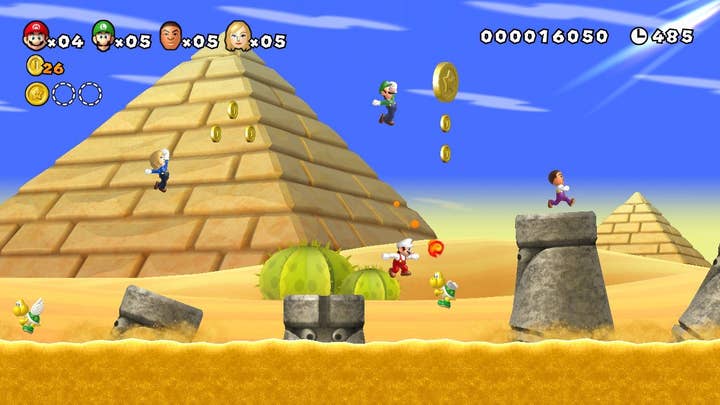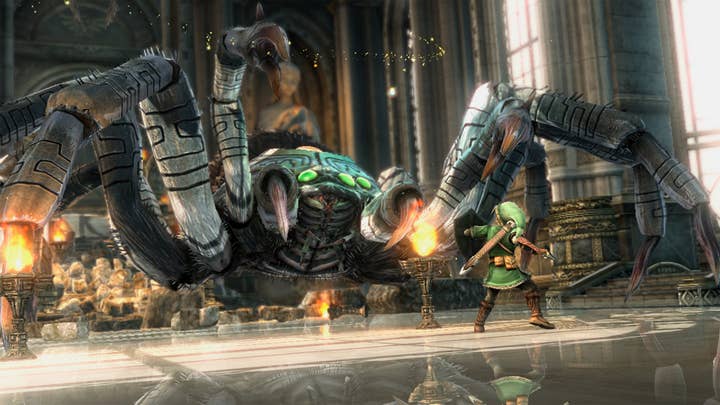Can Microsoft Launch the Next Xbox in 2012?
Digital Foundry analyses the latest "Nextbox" rumours.
In the here and now, the Taiwan Semiconductor Manufacturing Company (TSMC) - the chip manufacturer for AMD, NVIDIA and indeed Microsoft - is transitioning to a 28nm process and we can expect to see the first graphics cards using it early next year. Any transition to a new process causes yield issues and it's really unlikely that Microsoft would want to take that kind of financial hit again, particularly if it's at the expense of its current, profitable console - and certainly in light of the current global economic turmoil. Targeting 2013 would be far more prudent in this respect, once efficiencies have improved and TSMC actually have strong capacity - there'll be a lot of competition for those fabs from AMD and NVIDIA, and potentially even Nintendo with Wii U.
The yield situation does lend some credence to another oft-repeated Nextbox rumour, however: the notion that it will feature dual graphics chips in its design. While the idea of packing two GPUs into its next console might sound crazy, it would allow Microsoft to use more chips from the production line in the same way that Cell (and indeed numerous CPUs and GPUs) had cores turned off to make chips with minor defects viable, improving percentages on chips that could be utilised.
One contact told us that two GPUs makes a lot of sense - short of adopting the fully programmable graphics chip (like Intel's abandoned Larrabee), it's almost a developer's dream feature.
There are also advantages from a development perspective too. One contact told us that two GPUs makes a lot of sense - short of adopting the fully programmable graphics chip (like Intel's abandoned Larrabee), it's almost a developer's dream feature.
Even used inefficiently, developers could tile - vutting the scene in half and sending each piece to different GPUs. Efficiency would be lost on border-overlapping geometry - just as it is with tiling on the Xbox 360 right now - but the rendering of geometry is less and less work with the slow shift from fully forward to fully deferred rendering. A deferred renderer would lose nothing in efficiency in all the lighting and shading passes.
More streamlined applications could see independent rendering operation parallelised - for example, rendering the main scene with the shadowmap, rendering the different cascades of the increasingly popular shadowmaps, rendering light buffers, rendering different portions of a complex post-processing chain - but post-processing is a good candidate for pure tiling, as well.


There would also be production advantages for Microsoft too. Two slower, narrower graphics chips should be easier and cheaper to make than one big one, and it would be less expensive to route two 128-bit memory buses instead of one 256-bit bus. It could also be cheaper to cool them separately too.
In terms of how we see the next-gen Xbox panning out based on what our own sources tell us, we understand that Kinect is set for a significant upgrade and has a very strong likelihood of ending up bundled with the machine. It is understood that Microsoft hosted a developer soiree at Disneyland just after E3 this year where the platform holder invited partners to pitch in with ideas on where they would want the technology to go, and the challenges they had with the current platform. This signifies that it was early days for the design just a few months ago, making the 2012 story seem even less likely.
It's also believed that Microsoft will continue its successful two SKU strategy, and indeed take it much further with its new platform: a pared down machine is to be released as cheaply as possible, and positioned more along the lines of a set-top box (the use of 360 as a Netflix viewing platform in the US is colossal) and perhaps as a Kinect-themed gaming portal, while a more fully-featured machine with optical drive, hard disk and backward compatibility aimed at the hardcore would be released at a higher price-point.
But beyond that we're still in the realms of conjecture - or as Microsoft would prefer to term it, "rumour and speculation". If history is any indicator, this in itself suggests that 2012 is not a likely release date - detailed Wii U specs and a hardware breakdown leaked before E3 this year, a good 18 months before the actual launch. We knew about the core make-up of PlayStation Vita over two years ago and that still hasn't been released yet. The paucity of details about Microsoft's new project and the fact that Nextbox specs remain mostly unknown suggests that we still have some way to go.


So is 2012 completely off the table? We know that Microsoft has a range of next-gen teams assembled, with core personnel like creative director Kudo Tsunoda in charge. We also know that 343 Industries has recruited some of the leading lights in graphics engineering, such as principle engine programmer Corrinne Yu, who has also participated in the development of DirectX 11 - known to be the core rendering API that powers the next-gen Xbox.
All the pieces are being moved into place, and Microsoft is the sort of company that can power through the sorts of challenges we've described in this article with sheer financial brute force - but the question is, why should the platform holder rush its new console to market?
All the indications are that Wii U is a product with a similar spec to the existing Xbox 360 with all the innovation centred on the controller. Meanwhile, Sony is still in poor financial shape - and all the indications are it's still at a very early stage in preparing its next PlayStation. Conceivably, Microsoft could dominate the next-gen console sector with an early release, but with the way things are shaping up, even a 2013 debut for the Nextbox would still give them the same advantage - and that's when we would be more likely to see the dip in 360 sales that would necessitate a next-gen successor.
All eyes are on January's CES to see if the rumours have some sort of firm basis, but I strongly suspect that E3 will be our first look at Microsoft's new hardware.
